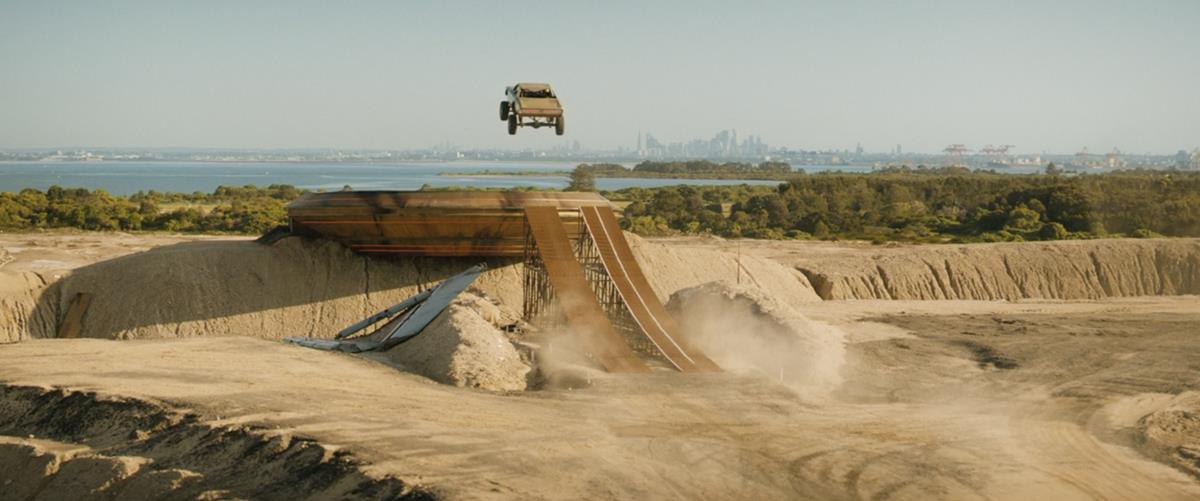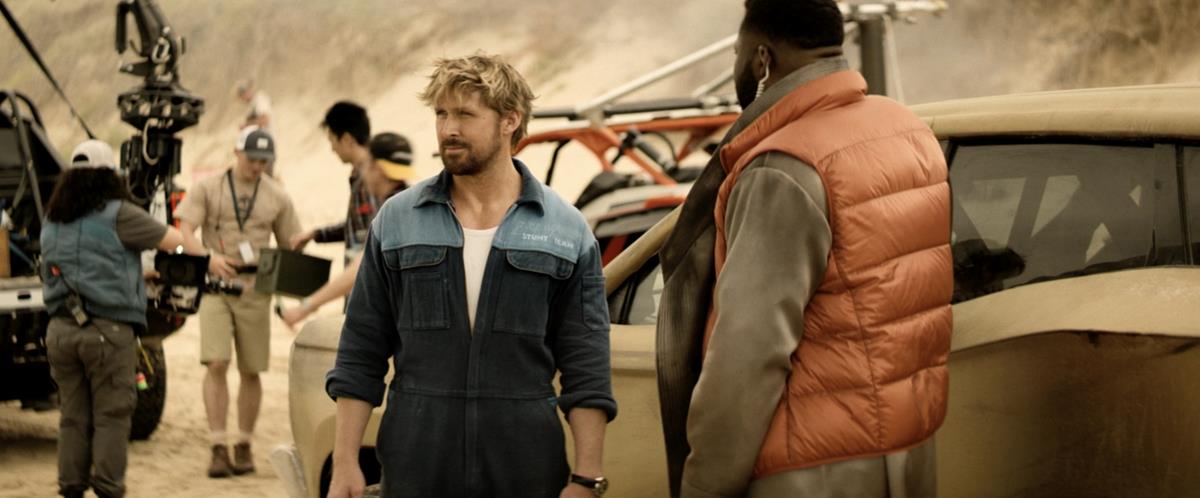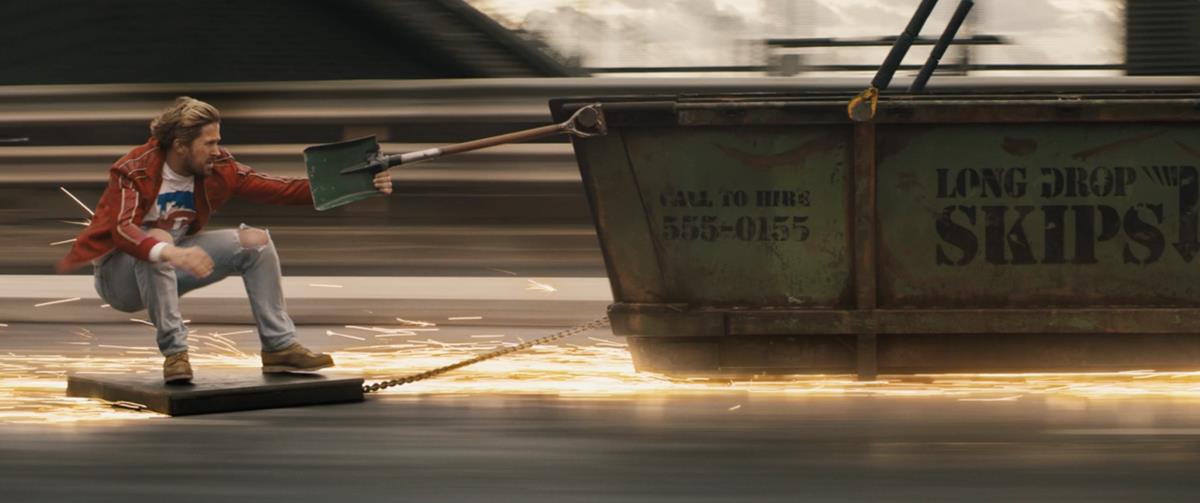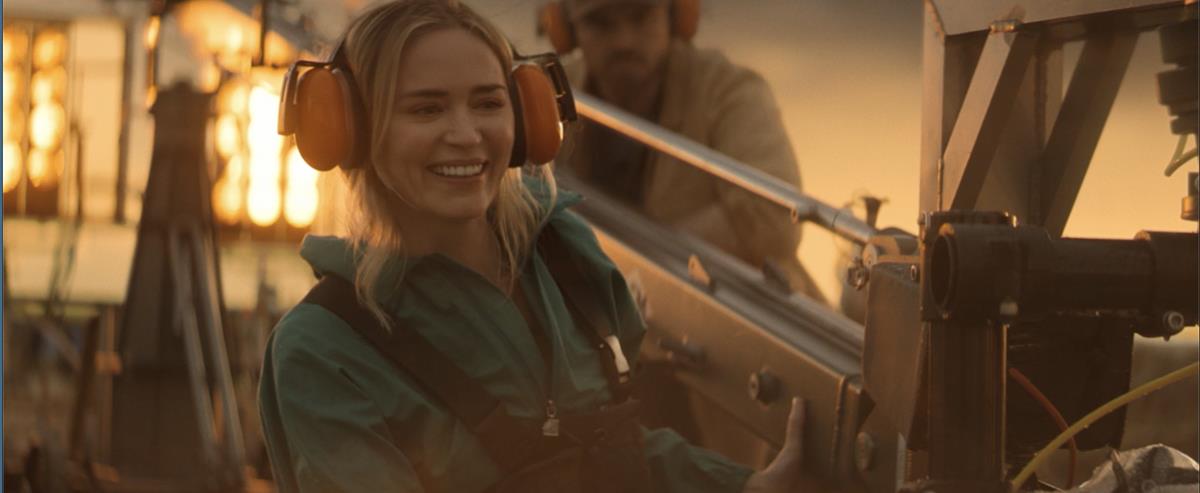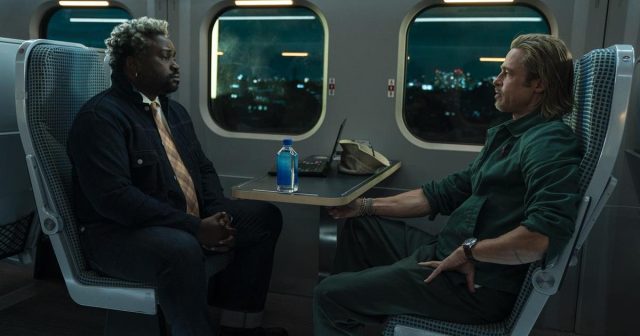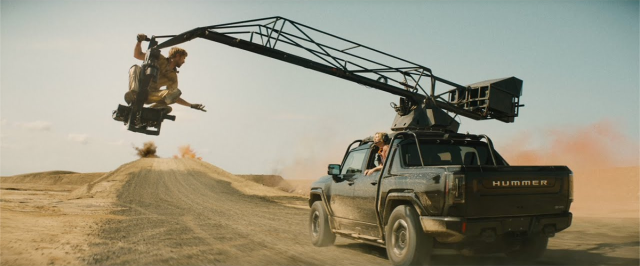
TL;DR
- For big action movies like director David Leitch’s “The Fall Guy,” one of the go-to editors in Hollywood is Elísabet Ronaldsdóttir, ACE, whose credits include “Bullet Train,” “Deadpool 2,” “Atomic Blonde” and the first “John Wick.”
- A lot of editing is about communicating with the stunt team early on and collaborating with them throughout production, which Ronaldsdottir excels at according to “The Fall Guy” first assistant editor Matt Absher.
- Ronaldsdottir discusses her approach to ensuring the action flows properly and getting the tone of the movie right.
- Finding the right tone for “The Fall Guy” was tricky, she says, because it’s two movies: a love story within an action extravaganza, but also a murder mystery.
Production on “The Fall Guy”
“My whole career is based on stunts,” says editor Elísabet Ronaldsdóttir, ACE. “Every movie I’ve worked on at least for the past 12 years has been stunt-based. We wouldn’t have those movies if it wasn’t for the stunts. We wouldn’t have John Wick or Shang-Chi and the Legend of the Ten Rings or Bullet Train. They’re all based on stunts.”
Nor would we have The Fall Guy, the recent action-comedy starring Ryan Gosling and Emily Blunt, which she edited for director David Leitch.

Ronaldsdóttir was also in the editing chair for Leitch’s Bullet Train, Deadpool 2 and Atomic Blonde, as well as the first John Wick, which laid the template for balletic stunt action.
“Those [stunt] guys and girls are a powerhouse,” she explained to Steve Hullfish on the Art of the Cut podcast. “They just throw out stunt-vis all the time and it’s amazing. Sometimes it ends up much better than what we end up with, because when you start shooting it, you can run into all kinds of issues.
“It can be the location, it can be all kinds of stuff. I love that both [producer] Kelly McCormick and David and [production company] 87 North are so focused on making stunts story-based.”
She is underselling herself, of course. Editing is never simple, no matter how good the performances, the VFX, coverage or direction.
“On a practical level, a lot of that is about communicating with the stunt team early on and collaborating with them — which Elisabet does and which I haven’t seen other editors do in the same degree of intimacy,” said The Fall Guy’s first assistant editor, Matt Absher. “They can practice their stunts and storyboard and previs, all day long, but they quickly bring what they have to Elisabet before they execute it to make sure it’ll actually work.”
The core of The Fall Guy is not in fact the stunts, it’s the romance between the lead characters.
“We wanted to showcase stunts but, at the same time, we don’t want to lose the love affair between Jody [Blunt] and Colt [Gosling]. So that was kind of the focus we had: the stunts, and how can we keep that love affair going through that sequence?” she said.
“The film was a tricky tone because it’s a love story within an action extravaganza, but it’s also a murder mystery. It’s two movies. There’s a lot happening, so finding that tone took us some time.”
There are a number of scenes which are intercut, showing parallel storylines. One such involves a karaoke scene with Blunt while Gosling is engaged in a garbage truck fight with Ryan. “Every time we intercut it’s to not lose sight of the lovebirds, because they are so amazing together.
“So if we would have stayed with the garbage truck sequence for the whole time, we would have lost Jody. And vice versa — if we stayed in the bar with the karaoke, we would lose Colt. So it was an effort to keep them together basically, and also amp up the excitement of it.”
She reveals the craft behind one scripted shot in the sequence: When Gosling drives past the karaoke bar and Blunt is singing. “That was shot specifically for that moment. It was tricky because we had to get to that moment, but we also had to keep the song in sync.
“And it’s an epic song. You can’t cut it to pieces. So we had to keep that moment going long enough for the drive by to hit at the right moment in the song.
“It’s like carving out something. You just keep going. And once I have the scene assembled, I start going through every single shot for certain moments — what’s going to work best.”
The Iceland-born editor also has a background in dance, which informs some of her visual sensibility.
“For me, it’s such an emotional thing but it’s extremely important that I get that feeling of the flow that one cut leads to the other. I use different techniques. It’s the movement of people. You can use a movement to have it flow into the next cut — or use the characters eyes, to help you flow into the next shot,” she said.
Helicopter stunt/date in “The Fall Guy,” edited by Elísabet Ronaldsdóttir
“I like the flowing of cuts. That doesn’t mean that sometimes you just wanna cut, because we’re always thinking how we can manipulate the audience into certain emotions or intrigues or keeping the story going. But in general, I like the flow until we need something else because of the story.”
READ MORE: The Fall Guy (The Art of the Cut)
The movie’s conceit necessitated both a strong stunt team and what Ronaldsdottir described as “an amazing visual effects crew, too,” the editor told The Rough Cut podcast’s Matt Feury. “Even though almost everything in this movie is practical effects and stunts, but even when you do live stunts, the visual effects team has to come in and take out the wires and padding.”
The editing team also coordinated closely with the stunt crew, utilizing the stunt-vis as a strong roadmap for those scenes, while recognizing that the dailies will naturally differ from what is actually filmed. They also review multicam footage with the script supervisor, who she explains lets them know ‟which shots we can’t use for whatever reason so we don’t waste time on it.”
But even when the action goes as planned — like for stunt driver Logan Halladay’s record-breaking 8.5x cannon roll — you can’t guarantee you captured it all. In this case, Ronaldsdottir recalls that one of the approximately seven cameras, this one mounted on the vehicle, overheated during the take. “It was a beautiful art shot. Amazing. And the camera overheated,” she remembers.
But fortunately, that wasn’t the end of it. Absher explains, “We got an outfit out in London called Fluent involved. They are these real deep image science nerds, and they drilled into the layers of these pixels. It took them a few months, but they pulled the shot out and got it back to us in immaculate shape.”
Crafting the Right Look
Although full of his signature show-stopping action, The Fall Guy‘s aesthetic is visually distinct from many of Leitch’s other films.
Absher says, ‟The Fall Guy was shot on vintage lenses, the Panavision C-Series, so there was some softness on the tops and bottoms of the frames. Right out of the AVID, it had a projected, cinematic look.”
DP Jonathan Sela also wanted the film to have analog look, and this extended to the dailies, which Ronaldsdottir said even ‟had film grain incorporated” for the VFX vendor to copy.
Absher explains, ‟The look was baked in from the beginning, and through previews and studio screenings, we knew exactly what we were going to get.”
Additionally, this movie features ‟a lot of handheld shots, which doesn’t happen often in David Leitch films,” Ronaldsdottir says. ‟That gives it a different feel.”
READ MORE: The Rough Cut: A Crash Course in Editing “The Fall Guy” (Frame.io)
Next, Watch This:

Why subscribe to The Angle?
Exclusive Insights: Get editorial roundups of the cutting-edge content that matters most.
Behind-the-Scenes Access: Peek behind the curtain with in-depth Q&As featuring industry experts and thought leaders.
Unparalleled Access: NAB Amplify is your digital hub for technology, trends, and insights unavailable anywhere else.
Join a community of professionals who are as passionate about the future of film, television, and digital storytelling as you are. Subscribe to The Angle today!



